
REVIEW
NSBillet Daemon Pedals Are Made In Canada
MADE & Materials
Years ago, North Shore Billet was based on the North Shore. Now they machine things & stuff at their facility in Whistler, B.C. Their house brand is probably best known for their vast selection of replaceable derailleur hangers and top quality, fairly priced chainrings. NSB also manufactures for Chromag Bikes, for other bicycle brands, and for non-bike-related applications.
When I first met NSB proprietors Chris & Pete, around the mid-noughties, they were largely doing the same thing they are now. Out of their shop here in paradise, they made chainrings and other bits for eNVy components, they made stems, seat collars, and frame parts for a relatively nascent Chromag, they made derailleur hangers and 'Hanger Bangers' under their own brand name. They also put their name on some very nice small-batch products like Freelight Cranks, front hubs, and later NSB Overlord stems.

NSBillet makes an extensive range of chainrings in Whistler, B.C., including this unicorn 24t SRAM 3-Bolt Narrow-Wide unit. They also machine the bodies for these Chromag Radar pedals.

I purchased myself a fresh NSB Overlord stem when, at long last, they came back into stock this year. I like the M6 bolts, and I think 130 CAD (145 CAD for the 35mm version) is very fair for a BC-machined stem.
When a 'Made In Canada,' label is applied to a pedal, it can refer to a wide percentage of the finished product. There are some pedals that arrive as forgings from overseas and are post-machined, anodized, and assembled here. Made in Canada. There are some pedals where the bodies are machined in Canada and assembly is done here but the axles, guts, and pins come from large manufacturers like HT and Wellgo. Made in Canada.
I'm not suggesting anything untoward is going on, merely that reporting country of origin is a fairly opaque process. Along with the growing expectation that companies disclose their emissions through their supply chains, I'm interested in seeing more transparent breakdowns of where materials are sourced and where manufacturing actually takes place, as NSB has done in the diagram below.

If a small company like NSB can make this happen why can't much larger ones? I'd guess that even customers untroubled by invisible-hand econonics may not choose to buy a component from Myanmar, so companies add value until it can be labelled as originating from a less troubling nation.

The in-house manufactured stainless steel pins are perhaps the most unique aspect of the Daemon pedals. The tapered shape provides a tenacious bite.

The axle is machined at North Shore Billet using steel from the USA. They use a Nitrox coating for surface hardness and corrosion resistance.

The IGUS bushing is imported from Germany. The stainless steel bearings come from Enduro in Taiwan. The end cap is machined at NSB using aluminum from the USA.
I'd guess that North Shore Billet's Daemon pedals have more components manufactured in-house than any pedal on the market. They make their own steel axles, machine their own bodies, and even shape their own tapered stainless steel pins. They're very transparent about it and I think most companies selling their own products could easily do the same. Or, get that information from Wellgo or HT if they're just labeling an off-the-shelf pedal model.
I understand there is a balance that most companies try to strike between nerd and noise so I'm not asking for a full materials breakdown in bold print on the, recycled and recyclable, minimal packaging. Just put a link to it on the website so never-satisfied nerds like myself can easily find it.

The pedal bodies are 112mm x 103mm and are truly concave. They're 17.75mm thick at the front and back of the pedal and 14.75mm thick at the axle.

The house-made stainless steel pins are 5mm long and their positioning creates a total concavity of 7mm. It all adds up to a lot of traction.
Hungry Daemons
I doubt it comes as any surprise, given their close association with Chromag, that the NSBillet Daemon pedals provide excellent traction. Or, that the concave shape feels very natural underfoot. Or even that my size 43 shoes were immediately at home on the mid-sized platform that's a hair longer (112mm v. 110mm) and a bit narrower (103mm v. 108mm) than the classic Chromag Scarab that has long been the go-to for many of my flat pedal riding friends with similarly-sized stompers.
Before trying the oddly natural feeling convexity of OneUp's Composite pedals, and the massive flat deck of Kona's WahWah2 composite pedals, I would have told you unequivocally that it was concave or die for me when it came to pedal shape. Since I started exclusively riding flat pedals, I've come around to the idea that pedals that work for me, come in different shapes and sizes.
I've been going back and forth between the Daemon's and my OneUps and it's an easy transition. While the 115x105mm OneUp's math out to a larger platform, in practice they feel a bit smaller than the 112x103mm NSB Daemons. In the heat of battle, I don't have a problem making grip with either pedal but through whatever combination of the tapered pin shape and concave platform, the NSB provides more grip.

The Daemon pedals provide fantastic traction. So much so, that I found combining them with a really sticky sole, like Giro's Mute, was overkill.
Where the geometric soles of my Leatt 2.0 shoes are my favourite combination with the OneUp pedals I found the traction to be overkill with the Daemons. I tend to prefer a less tacky interface than most riders I know but as well as riding the Leatt's and the very sticky Giro Latch shoes I was testing, I ended up spending the bulk of the review period in my Crankbrothers Stamp shoes. The Stamps are sticky-enough with a variety of pedals but combined with the NSBillet pins and pedal shape, they provided the perfect blend of consistent grip and the ability to reposition my feet.
Where it really gets interesting is in riding the Daemon's with shoes that many folks would write-off due to how little traction the soles provide. I'm thinking of any number of Vibram-soled shoes (Pearl Izumi, Bontrager, Giro) I've tested which were high-quality footwear but had an out-of-whack slip to grip ratio, especially when riding steep terrain in the wet. I was particularly impressed with how much better Giro's more budget-friendly and very long-wearing Jacket II shoes (115 CAD | 90 USD) were when combined with the Daemon, compared to any other pedal I rode them with.

On my composite pedals if I smash off a pin that's usually the end of it. The M4 threads on the Daemon are very resilient and I've replaced 4x broken pins to date.

As with all my pedals, the inside leading edge pin - when the pedal face is pointed to the ground - was the first to go missing. I've now broken this one twice.

The pins are easily extracted and installed through the back using a T-8 Torx key. Go slow if there's any damage, so the threads can be chased.

If your (home) mechanic doesn't have a metric tap set, then add that to the list of great gifts that aren't beer! Otherwise your quality local shop definitely has one and would be happy to help.
Breaking pedal pins always feels like a bit of a fluke. I'll go months with no failures and then in a single ride, I'll come back missing a couple of pins. No pedal I've tried is immune and the ones that have sheared off the Daemons are in the same spots as my pedals always end up shedding them.
I've replaced four pins so far and the first three were all very straightforward. The pins sheer cleanly at the pedal body and are extracted from the back using a T-8 Torx. The best T-8 I found for the job is the one that comes with SRAM brakes and bleed kits for inserting their barbed line fittings. If you don't have one at home, I'm sure your preferred local shop will be happy to hook you up.
The fourth pin I replaced was a repeat offender - the inside leading edge of my chocolate foot, which is where I break the most pins. Whether I didn't thread the replacement cleanly the first time, messed up in waiting too many rides before replacing it, or it just broke in an ugly way, the threads weren't happy about swallowing a replacement pin. It was a one-minute fix to tap the thread and the pin went straight in cleanly after that but I think it's a good prompt to remind folks that sometimes you have to take a deep breath and adult yourself some patience. These are potentially forever pedals and if you don't own a tap set it's 100% worth your time to take them to your local shop and ask the mechanic there to chase the threads for you.

NSBillet sells the Daemons in six anodized colours (Silver, Black, Red, Pewter, Red, & Gold). Silver is the only choice as far as I'm concerned - a timeless finish for a product you could have forever.
Until I started riding the Daemons, my daughter's Chromag Radars were the most expensive flat pedals at my place. Someday, she's going to grow out of them and the heavily scarred purple anodizing looks like it's been beaten on rocks but despite that, at 130 CAD | 105 USD they are an investment. Fantastic grip and quality manufacturing amortized over the 10+ years she'll be using them. I think we'll come out winning when it comes to performance v. price.
I've been on the composite pedal program for a while now myself. Upfront the traction v. treasure value is unbeatable. But, now that I've replaced a few pairs of pedals and committed to riding flats, the upfront cost of a premium pair of fully serviceable aluminum pedals, especially silver ones that are going to look good for years, seems reasonable to me. They just have to outlast four pairs of my preferred composite pedals. Maybe five if I factor in replacement pins and I suppose innards at some point.
The 250 CAD | 200 USD North Shore Billet Daemon pedals carry a small price premium over many other high-end options. They also sport made-in-house axles and pins, high-quality guts, and they're beautiful. Whether that combination of form and function, performance, and manufacturing, overcomes the financial factor is will have to be adjusted to your specifications. If you can justify them, they're excellent.

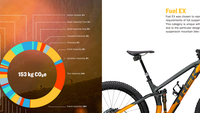



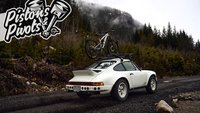
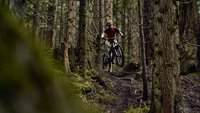

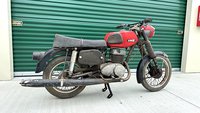
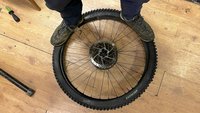
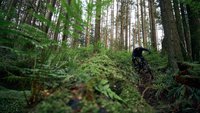
Comments
KavuRider
2 years, 5 months ago
OneUp composites are my go to now as well. Cheap, feel great and easy to rebuild.
These pedals are beautiful though...
Reply
Andrew Major
2 years, 5 months ago
OneUp Composites are awesome. Hopefully I did a solid job of explaining why I think NSB delivers long term value here without taking away from what a great experience I’ve had with multiple pairs of OneUps.
Reply
Vik Banerjee
2 years, 5 months ago
Nice looking pedals. Running a manufacturing operation in Whistler is pretty sweet!
I've switched to composite pedals and since I don't have a low BB FS bike any longer my pedals aren't getting savaged anywhere nearly as fast. As long as I don't crack a pedal body [less likely without a low BB bike] it seems like I can just rebuild the composite pedals and remain further ahead indefinitely on cost than buying a bling metal pedal and rebuilding it.
A nice metal pedal is a thing of beauty so I can see owning a pair or two just to enjoy the craftsmanship, but the value proposition of composite pedals is high.
Reply
Andrew Major
2 years, 5 months ago
I’m clearly a big fan of composite pedals, but for me they’re disposable. I haven’t had a OneUp or a WahWah that I was prepared to put fresh guts into once they were sloppy. Maybe if I changed to guts more often, maybe if I used product to help hold the bearings in place, absolutely YMMV.
Like a King hub, or my sad looking but solid Turbine cranks, I’m hoping/feeling these pedals are something I can do another look at five years from now.
Reply
pedalhound
2 years, 5 months ago
Try the diety deftraps...I'm loving mine...super grippy and haven't lost a pin yet....which may just be luck...but no other pedal has lasted this long...I'm sold!
Reply
Timer
2 years, 5 months ago
Does it still count as "rebuilding" if the composite pedal body is a replacement part?
Reply
Andrew Major
2 years, 5 months ago
Little pedals of Theseus for a Friday morning?
Reply
Steven Hambleton
2 years, 5 months ago
They look amazing but sadly not wide enough for me. I have a set of Deity Deftraps at the moment but a set of Chromag Dagga pedals would be perfect!
Reply
Andrew Major
2 years, 5 months ago
Dagga is the big platform champ right now according to all my friends with flippers. If you aren't running really thick soft rubber soles (FiveTens) then the pro tip is to swap the pins with the ones that come stock with the Scarab pedals. Excellent grip with any shoes but still the massive platform.
Reply
Gage Wright
2 years, 5 months ago
Try the Daggas stock first. I love the stock long claw pins and some resoled Fiveten freerider pros. You will chew through shoe soles (1 a year for me) but there is an excellent cobbler at Gold Star Repairs in Vancouver.
For me I am not sure if the Dammons hold much more than the Daggas.
Reply
Andrew Major
2 years, 5 months ago
That's great for riders running the thickest soled options from FiveTen but friends who've tried the Daggas with other shoes find that the pins don't penetrate far enough and they feel really weird in use - the easy solution is to run the Scarab pins which are plenty sharp, just not as tall, while still getting the larger Dagga body.
That's doubly awesome that your FiveTen uppers are lasting multiple seasons and that you've found a place to resole them!
Reply
Agleck7
2 years, 5 months ago
I’ve been running both the Deftrap and Dagga this season. Very similar feel, but crank to outside pin width the Deftrap is a tiny bit wider. Also it feels marginally slightly wider underfoot to me.
Both are great but I’d be happy as a clam with something basic like a Vault or Anvl tilt available with different axle widths so I could tune my stance vs needing a huge pedal body. (Size 11 shoe)
Reply
cheapondirt
2 years, 5 months ago
I'd also like to try a longer spindle on my vaults (size 11 as well). That pedal has a pronounced sweet spot and it's closer to the crank than I'd like.
Reply
samnation
2 years, 5 months ago
Shame there's no NSB part to thread pedals into...?
Reply
DanL
2 years, 5 months ago
One day maybe ?
https://nsmb.com/articles/garage-built-tom-moffatts-custom-made-bikes/
Reply
samnation
2 years, 5 months ago
I saw that during the summer and got very excited!
Reply
Andrew Major
2 years, 5 months ago
This is just a mock-up I did as NSB never made direct mount rings to fit their old Freelight cranks. I think they look amazing. These are my cranks and they were delightful in their day other than all my issues with ISIS bottom brackets.
Reply
Gage Wright
2 years, 5 months ago
I would 100% save my money up and buy some NSB cranks, hopefully cranks that can fit shimano chainrings.
Reply
Andrew Major
2 years, 5 months ago
Why Shimano chainrings if you don't mind me asking?
A SRAM 3-Bolt system is the most likely route they'll go for good reason. No proprietary tools and the best support on the market in terms of ring options whether it's a 24t NSB, an oval stainless Wolftooth, etc. Plenty of SHI-12 options for 3-Bolt if that's a concern.
At least RaceFace used a legacy tool interface for CINCH. Shimano could have done the same.
Reply
samnation
2 years, 5 months ago
I'm all for Shimano tooth profile, I have become a huge fan of the Sramano AXS drive trains just to "save" the Shimano shift quality.
Reply
Andrew Major
2 years, 5 months ago
Plenty of aftermarket SHI-12 HG+ patterned rings for other mounting standards including SRAM 3-Bolt and CINCH. NSBillet makes some excellent options as does Wolf Tooth as does Race Face (for CINCH and also 3-Bolt).
Just need an HG+ 12-speed cassette and chain. Agreed that Shimano 12-spd shifts great.
Gage Wright
2 years, 5 months ago
Very good points, I was just hoping to match the shimano hyperglide drivetrain.
Reply
Gage Wright
2 years, 5 months ago
This comment has been removed.
LWK
2 years, 5 months ago
Great write up, I checked their website and the price was $250CAN. Which is not cheap but my Saints and a pair of HTs were in the same ballpark at full retail. I've broken 2 axles on the Saints within a couple of years which has been really disappointing as my old Shimano flats have lasted 10y+. So if these have that sort of lifespan and you can get the small parts, I'd say that's a win.
Reply
Andrew Major
2 years, 5 months ago
Thanks!
All the small parts are readily available. Being made in house I can’t see that being a problem going forward. The axles are beastly so it’s hard to imagine a failure but sh*t happens so always good to know spares are easily acquired.
Reply
Andeh
2 years, 5 months ago
I found the grip on the Daemons with the stock pins to be a little bit less than Tenet Occults (also with pins), although the visual quality is hands down better, and the sealing/internals seems better also. I swapped the fancy machined pins for some grub screws, and they're now otherworldly grippy. So the Occults live on on my DJ, and the Daemons get the place of honor on my MTB.
YMMV, just my personal opinion, etc. I'll take all the shoe pedal grip I can get, then ask if there's still a little bit more. My comparison is using Freerider Pros and Impact Pros in warm, dry conditions.
Reply
Andrew Major
2 years, 5 months ago
Interesting on the grub screws. Are they longer like the Dagga pedals? Maybe it comes down to the some depth on the Freeriders allowing the pins to go farther in?
OneUp composite pedals have the sharpest threaded screws I’ve used and the NSB pins are more tenacious in comparison. But, I don’t have FiveTen shoes to compare.
Reply
Andeh
2 years, 5 months ago
The total pin height remains the same with the grub screws. I think the difference is the conical part on the machined pins kind of pushes up on the rubber, and is also more slippery than cheaper black iron hex pins (like that on most pedals).
I know you like shoes that have more "medium sticky" rubber vs. Stealth. So I think it might be the stiffer rubber grabbing onto the sharper pins. And super soft sticky rubber like Stealth or SlipKnot will probably favor coarser pins/grubs.
Reply
Andrew Major
2 years, 5 months ago
Makes sense to me. Cheers!
Reply
Andrew Major
2 years, 5 months ago
It’s interesting to me, as an aside, how many people just can’t get too much traction from their pedal/shoe interface. It drives me crazy not being able to move my feet around a bit and my knees (maybe from decades clipping in?) resent it.
With good technique it’s not like I’m regularly slipping pedals. Just one of those points of interest as certainly running soft rubber with the Daemons was more grip than I like, but I seem to be a vocal minority.
Reply
Justin White
2 years, 5 months ago
They look great, and based on experience with their chainrings and crank adapters, they will of course run great, but I'm so curious about the one nut sourced from Vietnam? Why can't that be machined in-house like everything else?
Reply
Andrew Major
2 years, 5 months ago
Most likely an added cost with no actual advantage that was not justifiable?
I’ll ask. Certainly it’s not down to capability.
———
I asked someone at King once why their Fun Bolts were so expensive by the time the process was explained to me I was at a loss to why they didn’t just use nice (factory made) Ti bolts with washers.
Reply
Mammal
2 years, 5 months ago
The cost/benefit of that part is likely not worth it.
Reply
Andrew Major
2 years, 5 months ago
Heard back from NSB, as you say much more expensive to make in house for no advantage.
I suppose that’s no advantage beyond saying they did it.
Reply
Greg Bly
2 years, 5 months ago
Cranking out parts on a CNC machine makes parts affordable. Machining hardened steel axels is what's bumping up the cost. As long as standards don't change ..........
These are an investment that should last . Even your new steed will fit these years from now. Made locally that's awesome!
Same I don't like my feet being stuck like glue . The worst is when you put your foot down awkward and then hit some teck trail. I feel much more confident knowing I can easily re position my foot.
Reply
Andrew Major
2 years, 5 months ago
I hate to say this out loud but I think the 9/16" pedal standard is safe. At the very least, 9/16" pedals and Profile Racing cranks will be available for the rest of our lives.
One of those products I'm planning to do a look back at five years from now and hopefully five years after that.
Reply
Velocipedestrian
2 years, 5 months ago
You've doomed us all! The 15mm pedal thread and 10mm saddle rail heard your brash optimism, they've infected the dreams of a marketing manager at Sram...
Reply
dave_f
2 years, 5 months ago
There is a lot to like about these, looks like they will have a long service life between rebuilds. Sadly they've decided to place them really close to the cranks, I'd probably end up with a lot of interference between cranks and shoes. Maybe they will offer a longer axle version in the future?
Reply
Andrew Major
2 years, 5 months ago
I was thinking about this comment on my short ride this afternoon. I'm definitely on the enhanced stance train but these don't feel really close to the crank to me. I'll try and do some overlapping comparisons tomorrow.
What flats do you normally ride?
Reply
dave_f
2 years, 5 months ago
DMR vaults on the MTB, shoe size is an average 42-43.
Reply
DanL
2 years, 5 months ago
Sad (but also happy) that I picked up some Daggas about a month before they went into final production. I got to feel a freshly minted pedal minus spindle and it looked like the usual high quality product from NSB who have always got the correct component to hand for me.
I used to love composite pedals thinking that I'd just replace em for cheap after they died but when a pedal tore off the spindle due to a circlip failure I wasn't so sure about that math.
Reply
Andrew Major
2 years, 5 months ago
So I have a buddy who has MURDERED a couple of pairs of composite pedals such that he had to walk and stand on the axle for an extended exit from the trails. Now he is back on his old Scarabs for life apparently (amazing what a rebuild kit will do, right?).
Other than tearing out pins I haven't had an issue beyond wearing out pedals and replacing them.
Truth told, if I had one fail I'd probably be on the same program. Nice aluminum pedals aren't that much money v. dealing with a failure on the trail.
Reply
bushtrucker
2 years, 5 months ago
Really into the look of these. I’m currently running DMR vaults which I value for their insane grip since I ride mostly in boots.
Wondering if you’ve able to provide any comparisons between these two?
Reply
Andrew Major
2 years, 5 months ago
I can’t provide a first hand comparison. I’m not certain I’ve ever pedaled a bike with DMR pedals on it.
Based of published measurements the DMR platform is smaller (105x105) and more concave.
What sort of soles on the boots? Some folks here who’ve tried the Daemon are saying a threaded screw is grippier with a FiveTen sole, my experience riding less grippy rubber is the Daemon tapered pins have more mechanical traction.
Reply
Eric Beaudry
1 year, 1 month ago
Curious what shoes you're running? I've got CB Stamps and would say the traction is pretty good with my Daemon's and stock pins. Just curious what shoes you're running and what experience you've seen?
Reply
Justin White
2 years, 5 months ago
Wrong "shear" used, BTW. "Sheer" is very steep, or unmitigated. "Shear" is to break off.
Reply
Andrew Major
2 years, 5 months ago
Thanks for the catch.
Reply
Please log in to leave a comment.